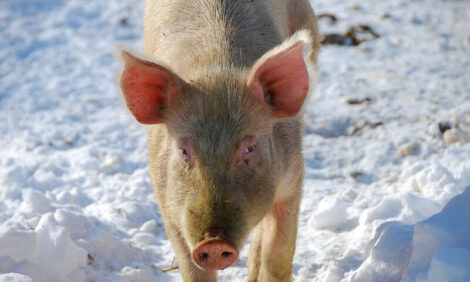



Pork Commentary: We’ve Had Enough Already
US - This week Jim Long of Genesus comments on the dramatic changes happening in North America's pork industry.John Harrington of DTN was quoted as saying it was a good start, but now show us the money.
"It will take 10 times the announced cut to justify. Personally I’m waiting to see the month that a significantly larger sow slaughter is reported. Without hard numbers, Smithfield’s talk may just be talk and bullish futures market speculation may just be speculation," he added.
What we have here is a question of creditability; on one side full time market blogger of DTN versus a CEO of a publicly traded multi-billion dollar corporation. When Larry Pope, CEO says at the USDA agricultural outlook forum in Arlington, Virginia (Bloomberg News) “Major producers are going out of business. There have been dramatic reductions in meat production. It’s a tough environment in the meat business and it’s happening worldwide.” in our opinion it is Real World versus ‘show me the money’ garble. Pope has got it right. The industry is in crisis. “Five dollar corn is reality when we thought four dollar corn would never be a reality.” Pope said today, “We are reducing our sow herds because the losses are so substantial that this industry cannot live. It’s not sustainable.”
Our industry is suffering. The pork powerhouses like Smithfield are not immune. In our opinion, questioning Smithfield’s credibility “Show me the money.” is out of place. They know their own reality.
Other Predictions!
Ag-economists Meyer and Steiner advised at the first of the year, “The current expansion will continue for a few more quarters.” Sorry boys, wrong again. Your economic models were bogus. We said at the same time you were saying this fantasy that pork powerhouses like all major corporations in any industry will rationalize production to lower costs in hard times. Since then, Smithfield has announced a 50,000 sow herd reduction, Hormel 9,000 and they are public companies who have legal obligations to the SEC. Most pork powerhouses are private. Many are doing the same. Note to ag-economists ‘liquidation is not expansion.’Observations
There appears to be a whole group of ag-economists that seems to revel in independent producers’ misery. They seem to always look for the glass half empty. Markets are driven a great deal by psychology. Constant negativism of our industry’s prospects drive down prices and producers’ morale. At the Minnesota Pork Congress, Mark Greenwood of AgStar Financial Services said “You have to get through the slump that you were going through today.”He then gave numbers that indicated the US herd has a per head cost of production advantage of $42.00 over Brazil and $111.00 over Denmark. Two of North America’s biggest pork export competitors. We can compete. A united North American pork industry can take on all comers. Instead of COOL, trade actions, countervail our continental industry should train our energies on greater global pork market access. As for the ag-economists, we feel sorry for them. They cannot see beyond academia.
Big Sky, Big Issues
We have written for the last couple weeks about the travesty that is government ownership of the 50,000 sow Big Sky Farms in Saskatchewan. It put the issue on the table.
Big Sky is a pork powerhouse living with the reality of the marketplace. There is no place to hide. The new government in Saskatchewan should be applauded for realizing this foolishness and announcing their intention to stop competing with independent farmers and taxpayers.
The article placed on the PigSite earlier this week: Big Sky Investor Seeks Exit Plan is indication of further developments:
Critics of IS’s role in Big Sky are expected to welcome the news. And here at Genesus Genetics in Oakville, Manitoba, we recently called on the Saskatchewan government to "get out of hog production."
It’s bizarre that the government would be competing with basic agriculture. It’s wrong and socialistic. There are also questions regarding Big Sky’s business model of sending weanling pigs to the US to be fed and finished. It did not match IS’s stated mission: 'To support the growth of the provincial economy by investing in Saskatchewan businesses and achieving a risk adjusted return on those investments.'
The original business model was to produce pigs in Saskatchewan and to feed them there. Now their business model is moving them to Iowa to finish pigs.
- How does moving a 12lb pig to Iowa benefit Saskatchewan?
- A pig eats approximately 80 per cent of its feed from 12lbs up. How does taking 80 per cent of the feed utilisation to Iowa help Saskatchewan producers?








